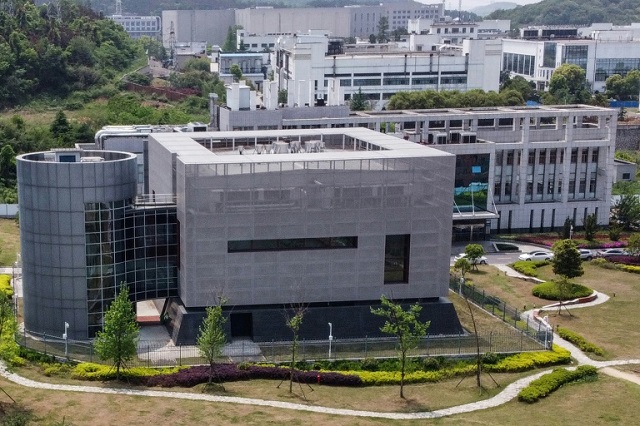
Beijing, China | AFP | The Chinese laboratory accused by top American officials of being the source of the coronavirus pandemic conducts research on the world’s most dangerous diseases.
US President Donald Trump and Secretary of State Mike Pompeo have both claimed that there is evidence the pathogen came from the lab in Wuhan — the city where the disease was first detected late last year.
But the World Health Organization said Washington had offered no evidence to support the “speculative” claims, and scientists believe the coronavirus jumped from animals to humans, possibly at a Wuhan market selling wild animals.
The top US epidemiologist Anthony Fauci has echoed the WHO’s statement, telling National Geographic that all evidence so far “strongly indicates” a natural origin.
China’s foreign ministry responded Wednesday that Pompeo had no evidence and that questions over the origin of the virus should be left to scientists, “not politicians who lie for their own domestic political ends”.
Here are some key questions about the Wuhan Institute of Virology:
– What do its researchers do? –
Work by the lab’s scientists helped to shed light on the COVID-19 pathogen in the early days of the outbreak in Wuhan.
In February, they published work concluding that the new virus shared a 79.6 percent sequence identity to the SARS coronavirus, and that it was 96 percent identical at the whole-genome level to a coronavirus found in bats.
The lab’s researchers had already conducted extensive investigations on the links between bats and disease outbreaks in China, and had highlighted the need to prepare for viruses potentially spreading out of their natural reservoirs into human communities.
Scientists think COVID-19 originated in bats and could have been transmitted to people via another mammal like a pangolin, but there is no definitive answer so far.
– What does it handle? –
The Wuhan institute houses the largest virus bank in Asia which preserves more than 1,500 strains.
The complex contains Asia’s first maximum-security lab equipped to handle Class 4 pathogens (P4) such as Ebola.
The 300-million-yuan ($42 million) P4 lab opened in 2018. A P3 lab has been in operation since 2012.
While the US intelligence community said it had concluded the coronavirus was not human-made, it added that it would continue to investigate if the outbreak started from contact with infected animals or from “an accident” at the Wuhan lab.
– Could there be a leak? –
US diplomatic cables seen by The Washington Post earlier said that officials were concerned about inadequate safety standards related to researchers’ handling of SARS-like bat coronaviruses in the high-security lab.
The institute has said it received samples of the then-unknown virus on December 30, determined the viral genome sequence on January 2 and submitted information on the pathogen to the WHO on January 11.
Shi Zhengli, one of China’s leading experts on bat coronaviruses and deputy director of the Wuhan P4 lab, said she would “bet her life that (the new coronavirus) had nothing to do with the lab”, according to Chinese state media.
And in an interview with Scientific American, Shi said the SARS-CoV-2 genome sequence did not match any of the bat coronaviruses her laboratory had previously collected and studied.
– What do scientists know about the virus? –
Researchers have noted that while there is no proof for the lab accident theory, there is also no clear evidence that the virus came from the Wuhan market.
A study by a group of Chinese scientists published in The Lancet in January found that the first COVID-19 patient had no connection to the market, and neither did 13 of the first 41 confirmed cases.
Professor Leo Poon of The University of Hong Kong said the scientific community’s consensus was that the virus is not human-made.
“We need to look at the origin of this virus. It is important because from a public health point of view we want to know how it happened and (if we can) learn from this,” he said.
David Heymann, professor of infectious disease epidemiology at the London School of Hygiene and Tropical Medicine, added: “We have a hypothesis that it came from a live animal market, and I haven’t seen anybody provide evidence that shows to the contrary.”
The WHO said last week it hoped China would invite it to take part in its investigations into the animal origins of the virus.
But China’s ambassador to the UN in Geneva said Wednesday that Beijing will not prioritise inviting international experts in to investigate the source of COVID-19 until after the pandemic is beaten, adding that the “right atmosphere” is needed.
 The Independent Uganda: You get the Truth we Pay the Price
The Independent Uganda: You get the Truth we Pay the Price



